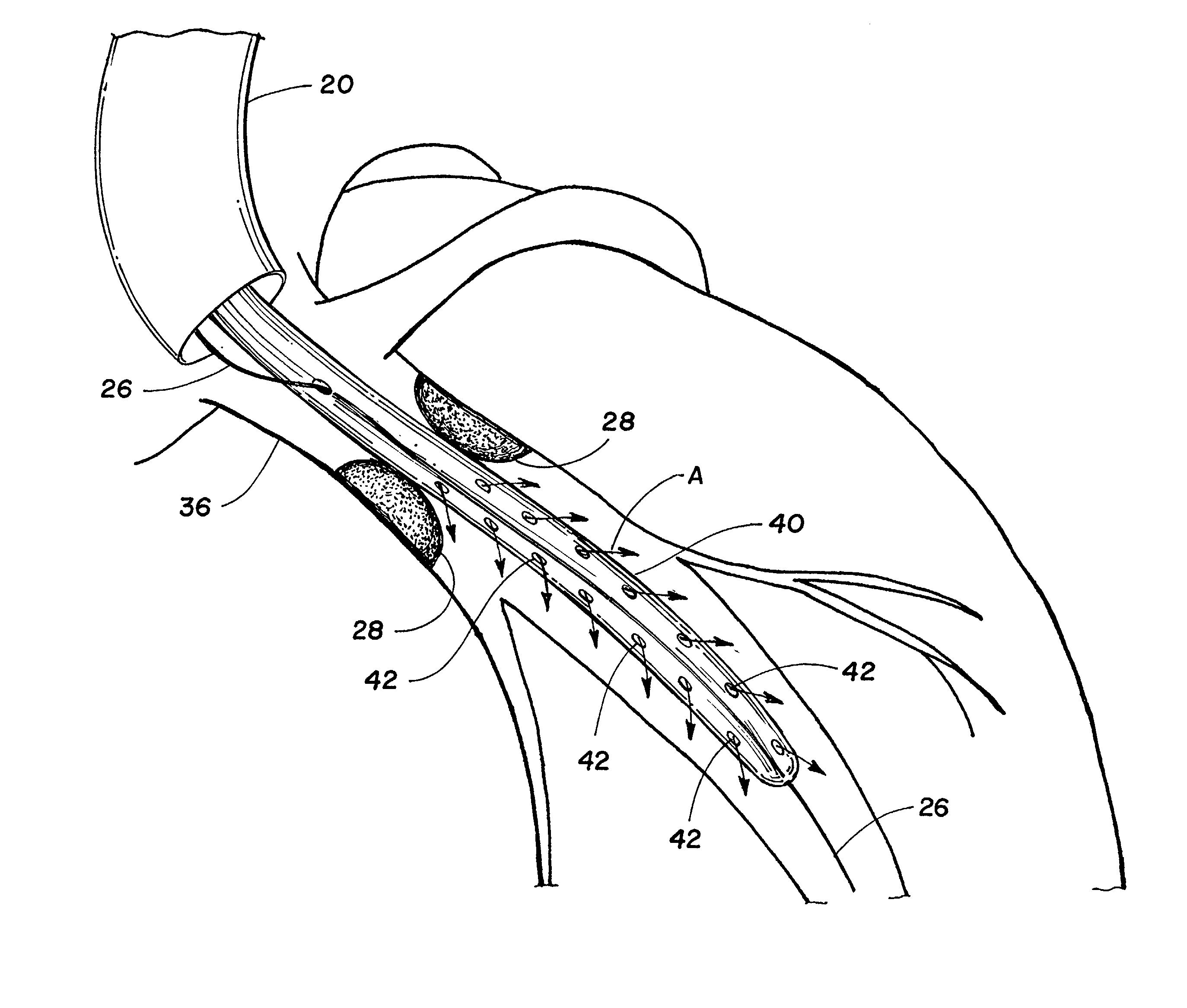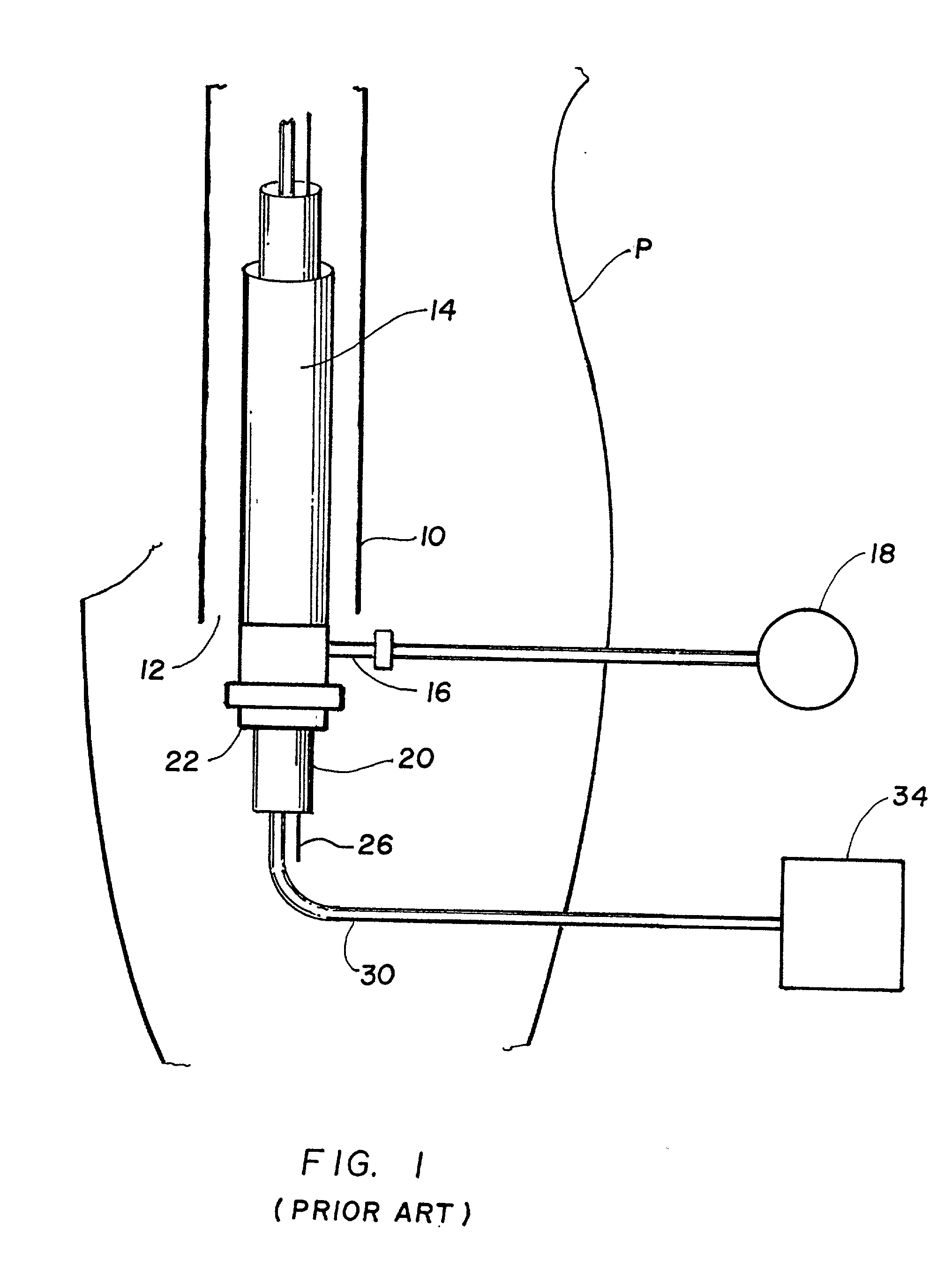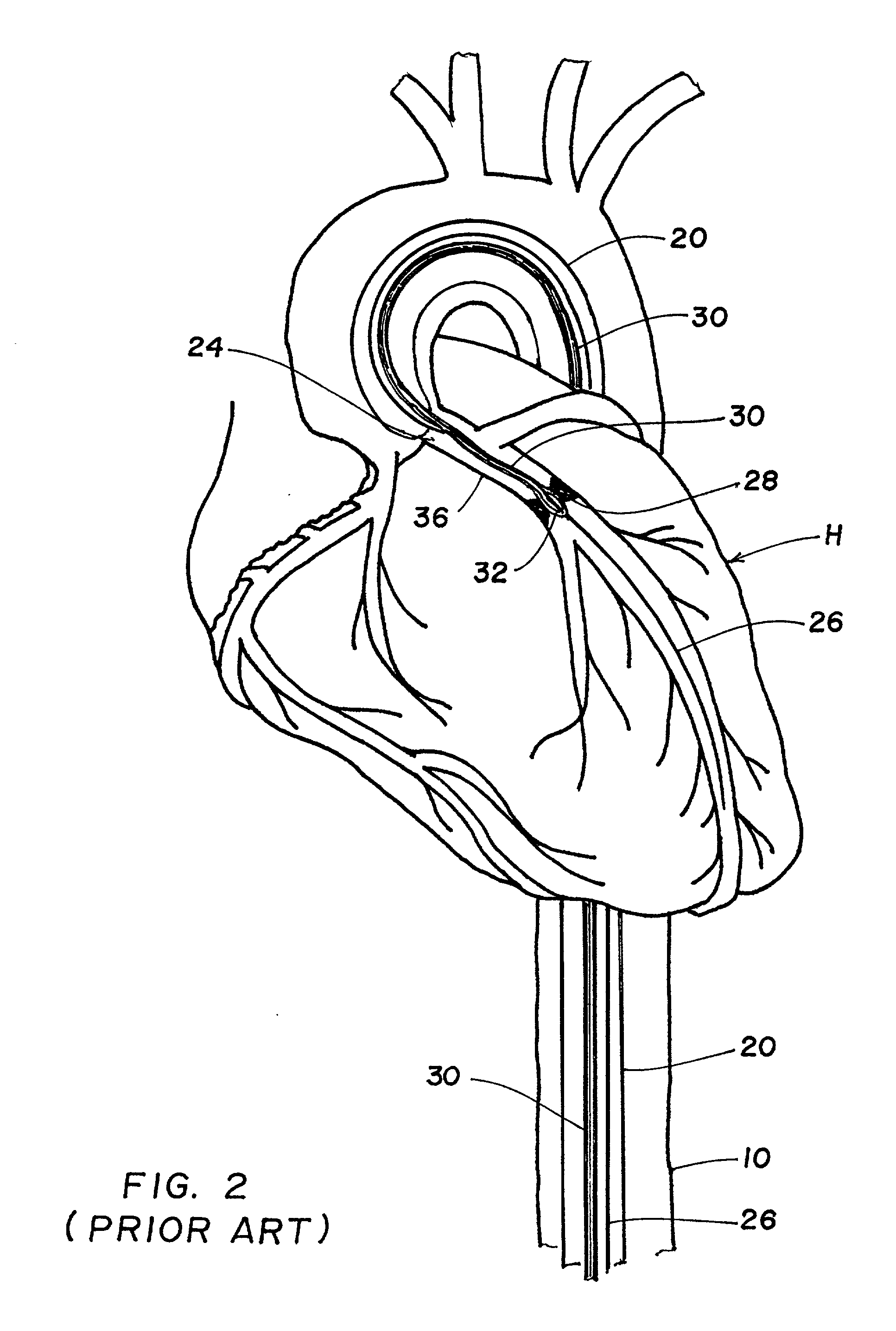Perfusion procedure and apparatus for preventing necrosis following failed balloon angioplasty
a balloon angioplasty and perfusion procedure technology, applied in balloon catheters, surgery, other medical devices, etc., can solve the problems of affecting the treatment effect of atherosclerosis, affecting the treatment effect, and the perfusion angioplasty catheters have met very little acceptance in the medical community, so as to achieve the effect of convenient and economical implementation
- Summary
- Abstract
- Description
- Claims
- Application Information
AI Technical Summary
Benefits of technology
Problems solved by technology
Method used
Image
Examples
Embodiment Construction
[0024] The present invention consists of a main inventive concept, the realization that the normal set up for a conventional balloon angioplasty is suitable for an emergency procedure to avoid ischemia in a patient in case of severe failure of the angioplasty. This concept of the invention provides immediate relief that makes it possible for a cardiologist to stabilize the patient in preparation for corrective heart surgery.
[0025] As used herein, the term "angioplasty catheter" is defined to refer to any catheter used in surgical procedures designed to enlarge the lumen of a vessel at the site of a stenosis. Referring to the drawings, wherein like parts are designated throughout with like numerals and symbols, FIG. 1 illustrates the typical set up used for conducting a balloon angioplasty procedure on a patient P. Access to a blood vessel 10, normally a femoral artery, is obtained percutaneously in the groin area 12 of the patient by inserting a sheath 14 having a diameter compatibl...
PUM
 Login to View More
Login to View More Abstract
Description
Claims
Application Information
 Login to View More
Login to View More - R&D
- Intellectual Property
- Life Sciences
- Materials
- Tech Scout
- Unparalleled Data Quality
- Higher Quality Content
- 60% Fewer Hallucinations
Browse by: Latest US Patents, China's latest patents, Technical Efficacy Thesaurus, Application Domain, Technology Topic, Popular Technical Reports.
© 2025 PatSnap. All rights reserved.Legal|Privacy policy|Modern Slavery Act Transparency Statement|Sitemap|About US| Contact US: help@patsnap.com



